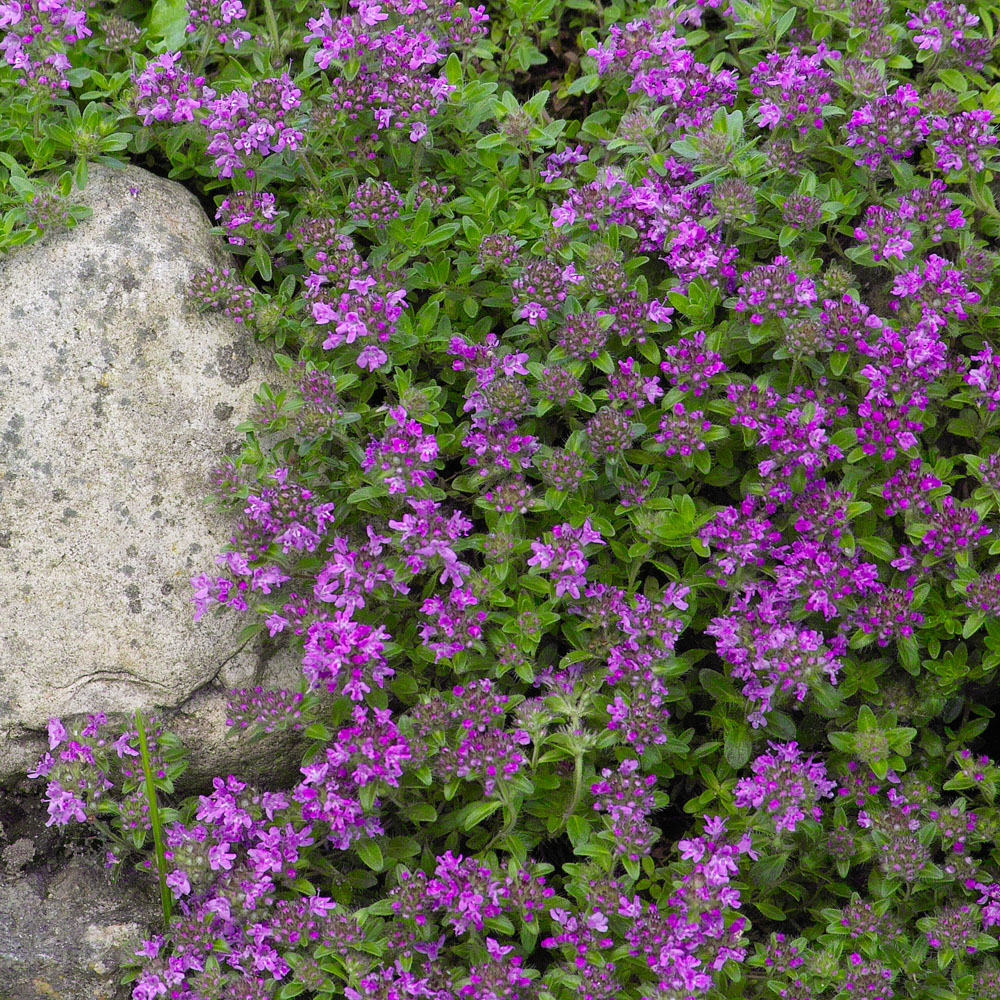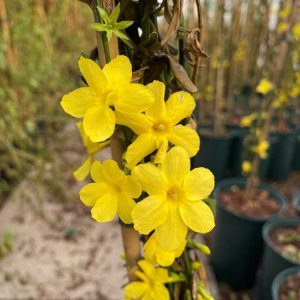Description
Thymus serpyllum, commonly known as wild thyme, creeping thyme, or mother-of-thyme, is a low-growing herbaceous perennial that belongs to the family Lamiaceae. It is native to parts of Europe and Asia and is widely cultivated in other parts of the world as an ornamental plant. Thymus serpyllum typically grows to a height of 5-10 cm (2-4 inches) and has small, oval-shaped leaves that are green-gray in color and grow in dense mats. In the summer, the plant produces small, pink flowers that are held above the foliage on short stems. Thymus serpyllum is a popular herb that is often used in culinary applications, particularly in European and Mediterranean cuisine. The leaves can be used fresh or dried to add a savory flavor to a variety of dishes, including meat, poultry, and vegetable dishes. The plant is also valued for its ornamental value, and is often used in herb gardens, rock gardens, and other small garden settings. Thymus serpyllum is a relatively easy plant to care for, and prefers full sun to partial shade and well-drained soil. It is also drought-tolerant and can be grown in containers. Overall, Thymus serpyllum is a fragrant and attractive plant that can add flavor and interest to a variety of garden and culinary settings. Its low-growing habit and low maintenance requirements make it a popular choice for both novice and experienced gardeners.
Key Facts
- Common Name(s):Creeping Thyme
- Hardiness:Fully hardy through most of the UK
- How big will I get? Thymus serphyllum can grow to a height of 0.2m and a spread of 0.5m.
- Did You Know That:The name Thymus is derived from the Greek word ‘thumos’ which means courage or strength, while the name Serpyllum comes from the Latin word ‘serpere’ which means to creep or crawl.
Plant Calendar
A rough guide to how this plant will change through the year.
| Jan | Feb | Mar | Apr | May | June | July | Aug | Sept | Oct | Nov | Dec | |
| Flowering Time |  |
 |
 |
|||||||||
| Foliage Colour |  |
 |
 |
 |
 |
 |
 |
 |
 |
 |
 |
 |
| J | F | M | A | M | J | J | A | S | O | N | D |
 |
 |
 |
|||||||||
 |
 |
 |
 |
 |
 |
 |
 |
 |
 |
 |
 |
Care Guide

Soil Requirements
Thymus serphyllum is a versatile plant and can cope with wet or drier soils, but prefers there to be decent drainage. This plant can grow in soil with a wide range of pH levels, it is not picky about the pH level of the soil.

Best Position
Thymus serphyllum prefers an exposed position and requires full sun to thrive, this consists of more than six hours of direct sunshine per day.

Maintenance
Thymus serphyllum should be cut back after it finishes flowering will promote growth the following year by redirecting energy from seed production and foliage maintenance to root growth.

Pest, Diseases and Wildlife
Thymus serphyllum is generally pest free, and it tends not to have problems with diseases. It is also known to attract bees, butterflies and other pollinators. It is not considered to be toxic.





